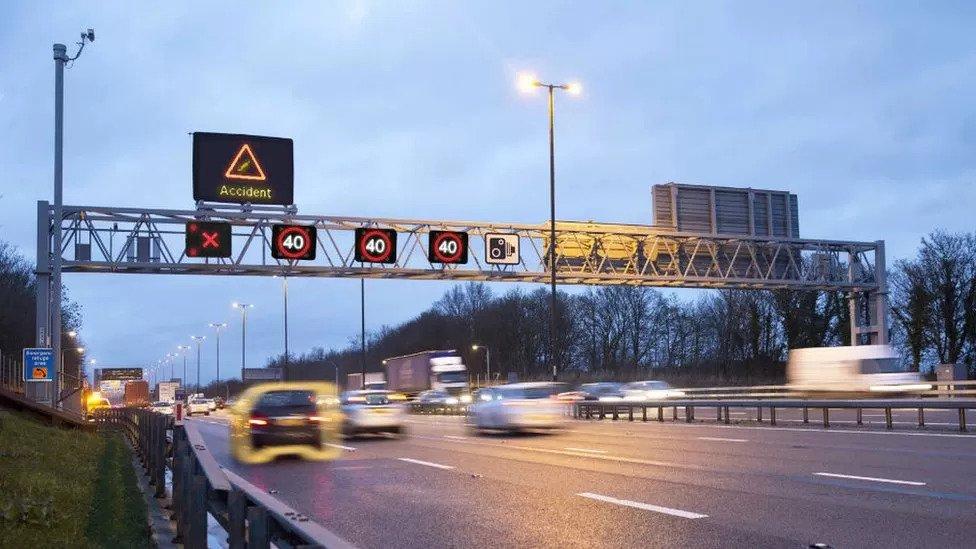This week, a software failure lasting two hours affected a significant portion of England’s smart motorway network, leading to renewed demands for the removal of these “death trap” roads.
The Dynac system – which includes signs, signals, and stopped vehicle detection technology (SVD) – ceased working at around 8.30 am and was not restored until 10.30 am. Only the east and southeast were unaffected.
AA president Edmund King said drivers who broke down in live lanes – with no hard shoulder to take refuge on – were ‘sitting ducks’. National Highways said it was ‘urgently investigating’.
The outage also made it impossible to change the signals in overhead gantries to close lanes with a red ‘X’ sign where a hazard had been detected.

Andrew Page-Dove, operational control director at National Highways, said engineers had worked to repair the system “as soon as possible” and apologized for any inconvenience caused.
Sarah Champion, the Labour MP for Rotherham, expressed her concerns regarding the ongoing development of smart motorways despite the government’s directive to halt their creation. She also highlighted a string of network outages and referred to the death of Jason Mercer, one of her constituents who died on a smart motorway in South Yorkshire in 2019.
Ms. Champion added: ‘By spring of this year, four new sections of all-lane-running motorways will begin operation. While the government dithers, constituencies like mine continue to host death trap roads.’
Greg Smith, who sits on the transport select committee, said: “I’ve been saying for a long time that the tech on smart motorways isn’t reliable enough and doesn’t work. The statistics from ORR are terrifying – and back that up. It’s time the Government took an even bigger step back from this, reinstated the hard shoulder, and re-evaluated again at a time when the technology is reliable, otherwise, lives are put at risk.”

A smart motorway is a stretch of road where technology is used to regulate traffic flow and – hopefully – ease congestion. There are three main types:
- Controlled, which has a permanent hard shoulder, but uses technology such as variable speed limits to adjust traffic flows
- Dynamic, where the hard shoulder can be opened up at peak times and used as an extra lane; when this happens, the speed limit is reduced to 60mph
- All-lane running, where the hard shoulder has been permanently removed to provide an extra lane; emergency refuge areas are provided at intervals for cars that get into trouble
All three models use overhead gantries to direct drivers. Variable speed limits are introduced to control traffic flow when there is congestion, or if there is a hazard ahead. These limits are controlled by speed cameras


